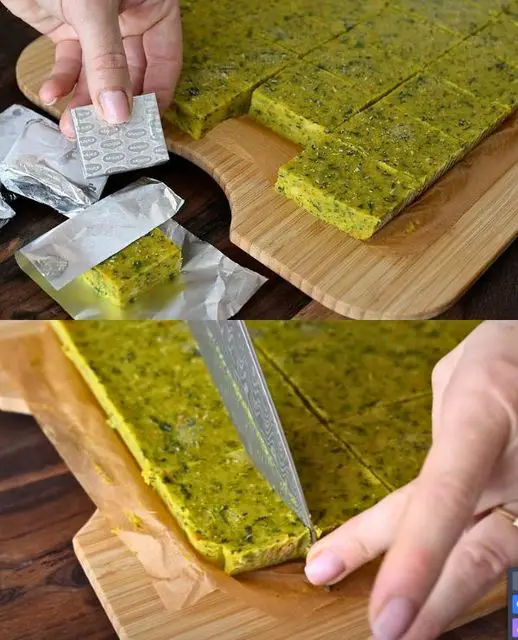This homemade vegetable broth is packed with fresh, wholesome ingredients that bring deep, earthy flavors to any dish. It’s an excellent base for soups, stews, sauces, or even enjoyed on its own as a nourishing, light meal. The simple process of sautéing, simmering, and straining creates a flavorful broth free from preservatives and full of nutrients.
Preparation Time
- Prep Time: 15 minutes
- Cook Time: 40 minutes
- Total Time: 55 minutes
- Servings: 8-10 cups
Ingredients
- Carrots: 3, chopped
- Leek: 1, cleaned and sliced
- Parsnips: 2, chopped
- Root parsley: 2, chopped
- Onion: 1, quartered
- Garlic cloves: 2, crushed
- Kohlrabi: 1/2, chopped
- Celeriac and leaves: 1/2, chopped
- Turmeric: 1 piece, peeled and sliced
- Parsley: A handful
- Sunflower oil: As needed
- Salt: 80g (about 1/3 cup)
Directions
Step 1: Sauté the Aromatics
- Heat Oil: Heat a splash of sunflower oil in a large pot over medium heat.
- Sauté Onions and Garlic: Add the sliced onions and garlic, cooking until softened and fragrant, being careful not to burn them.
Step 2: Add the Vegetables
- Add Vegetables: Add the chopped carrots, parsnips, root parsley, kohlrabi, and celeriac to the pot. Cook for 3-4 minutes, stirring occasionally.
Step 3: Simmer the Broth
- Add Water and Seasonings: Pour in enough water to fully cover the vegetables. Add turmeric, salt, and a handful of parsley.
- Simmer: Bring the pot to a simmer, reduce the heat, and cook for 30-40 minutes, or until the vegetables are tender.
Step 4: Strain the Broth
- Cool and Strain: Let the broth cool slightly. Strain it through a fine-mesh sieve or cheesecloth to remove the solids, leaving behind a clear broth.
Step 5: Serve or Store
- Immediate Use: Taste and adjust the seasoning if needed. Enjoy the broth right away for a warming, healthy drink.
- Storage: Let the broth cool completely before storing it in airtight containers. It can be kept in the fridge for up to 5 days or frozen for up to 3 months.
Serving Suggestions
- Use as a base for soups or stews.
- Enjoy on its own as a warm, light broth.
- Use to cook grains like rice or quinoa for extra flavor.
Cooking Tips
- Customize Vegetables: Add other vegetables like celery, mushrooms, or zucchini to enhance the flavor.
- Turmeric Alternative: If fresh turmeric isn’t available, use 1/2 teaspoon of ground turmeric.
- Deglazing: After sautéing the vegetables, deglaze the pan with a splash of water or white wine for added depth.
Nutritional Benefits
This broth is low in calories and fat, yet high in essential vitamins and minerals like Vitamin A, Vitamin C, and potassium. It’s also a great way to boost hydration while providing the body with important nutrients.
Dietary Information
- Vegan and Vegetarian
- Gluten-Free
- Low-Calorie
- Low-Fat
Nutritional Facts (Per Serving)
- Calories: 20
- Total Fat: 0.5g
- Saturated Fat: 0g
- Cholesterol: 0mg
- Sodium: 320mg
- Total Carbohydrate: 4g
- Dietary Fiber: 1g
- Sugars: 1g
- Protein: 1g
Storage
- Refrigerator: Store in airtight containers for up to 5 days.
- Freezer: Freeze in portions for up to 3 months. Thaw in the fridge before use.
Why You’ll Love This Recipe
- It’s simple, wholesome, and customizable.
- Free from preservatives and additives.
- Can be made in large batches and frozen for future use.
- Packed with nutrients while remaining low in calories.
Conclusion
This vegetable broth is a pantry staple that can be made ahead and frozen, providing a nourishing and flavorful base for countless dishes. The rich blend of fresh vegetables, herbs, and turmeric not only boosts flavor but also offers a wealth of nutrients. Whether you’re looking for a light snack or a versatile soup base, this broth is a must-have recipe for any kitchen.
Frequently Asked Questions
- Can I use frozen vegetables for the broth?
Yes, you can use frozen vegetables, but fresh ones offer the best flavor. - How long can I store the broth in the freezer?
You can freeze the broth for up to 3 months in airtight containers. - Can I use olive oil instead of sunflower oil?
Yes, olive oil works well as an alternative to sunflower oil. - Can I add other spices to the broth?
Absolutely! Bay leaves, peppercorns, and thyme are great additions for extra flavor. - What’s the best way to thaw frozen broth?
Thaw the broth in the refrigerator overnight or gently heat it in a saucepan on the stove. - Can I make the broth without oil?
Yes, you can omit the oil and sauté the vegetables in water or broth. - Is this broth gluten-free?
Yes, the broth is naturally gluten-free as it doesn’t contain any gluten-based ingredients. - Can I add meat or bones to the broth?
While this is a vegetable broth, you can certainly add bones or meat to make a heartier broth. - Can I reuse the vegetables after straining the broth?
The vegetables can be repurposed into a puree or composted, but they will have lost most of their flavor. - How can I make the broth richer in flavor?
Roast the vegetables before adding them to the pot for a deeper, more robust flavor.

